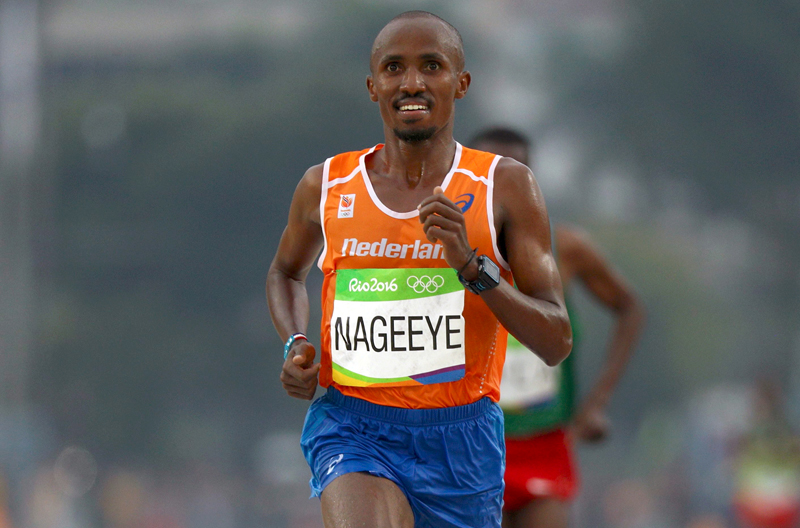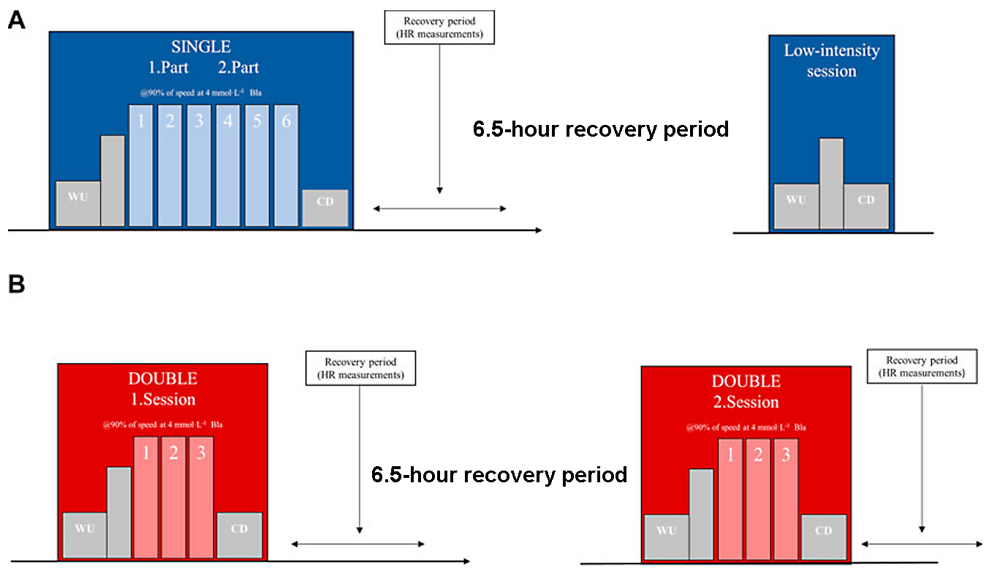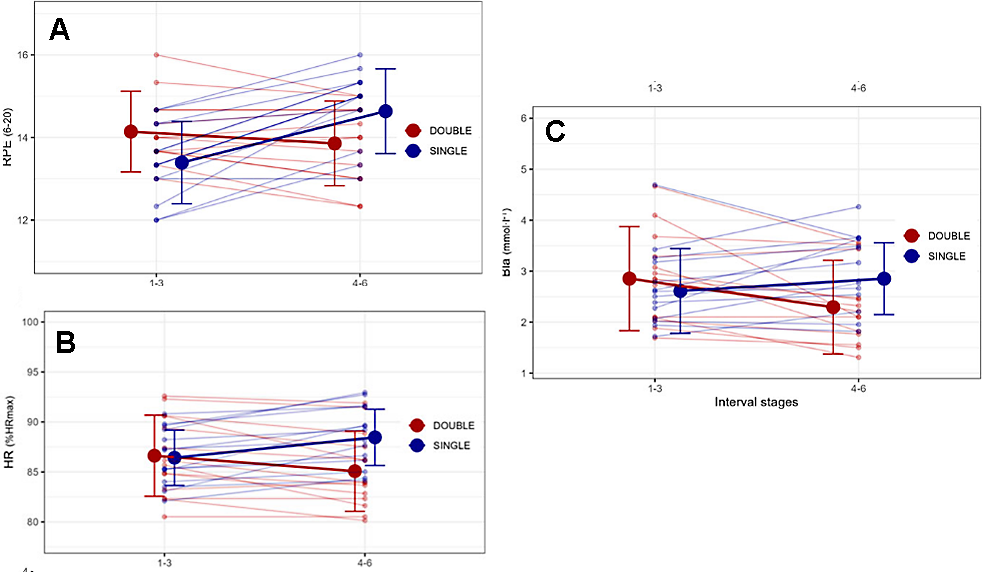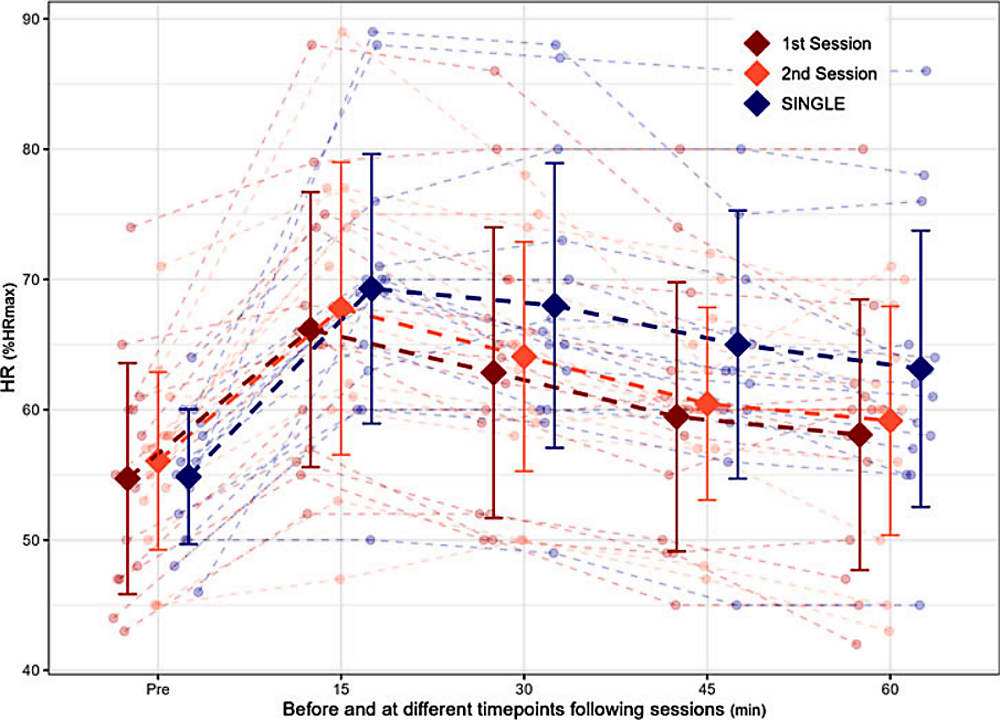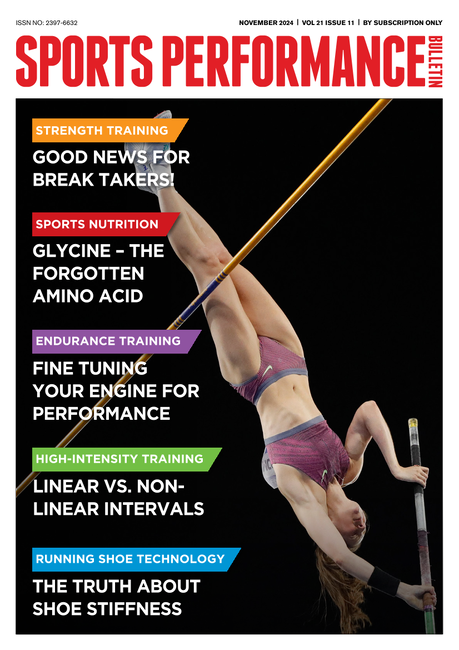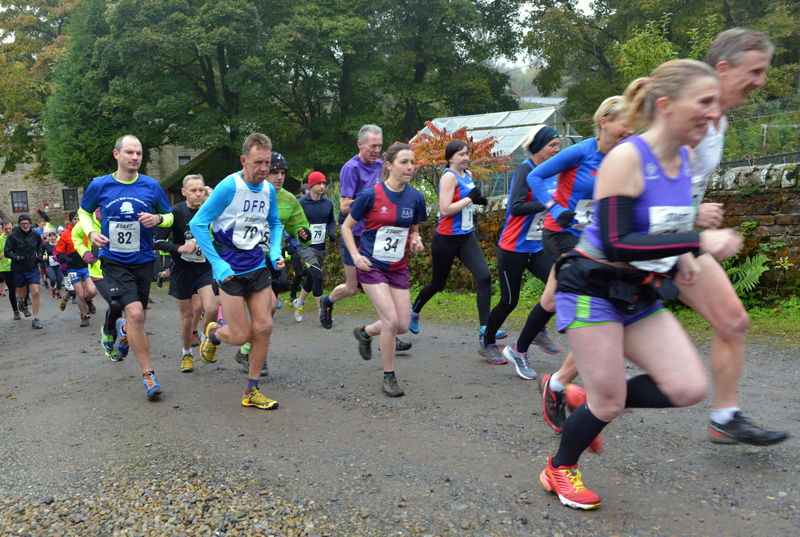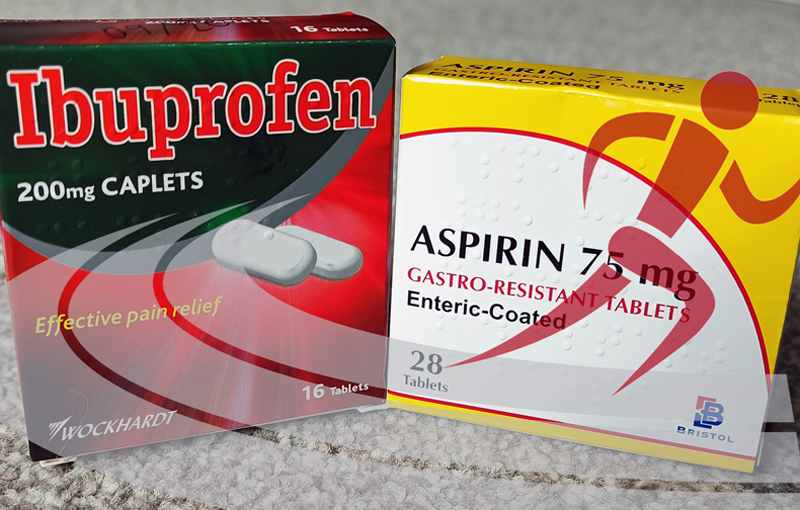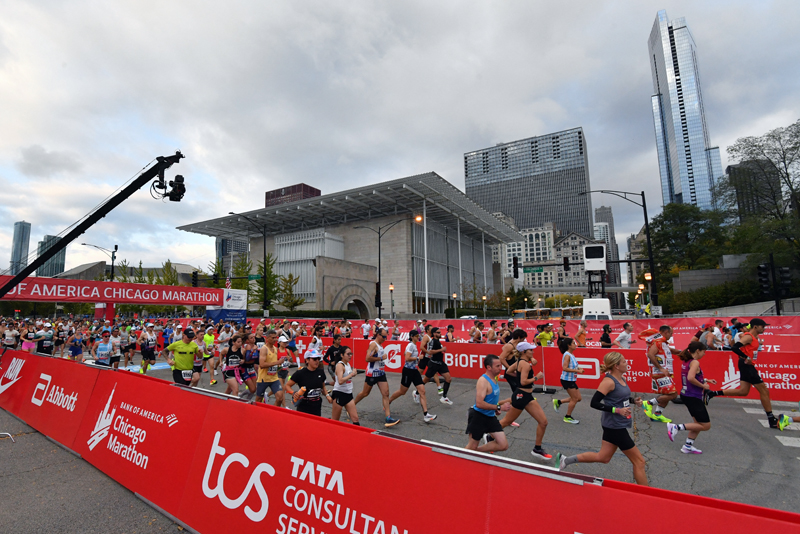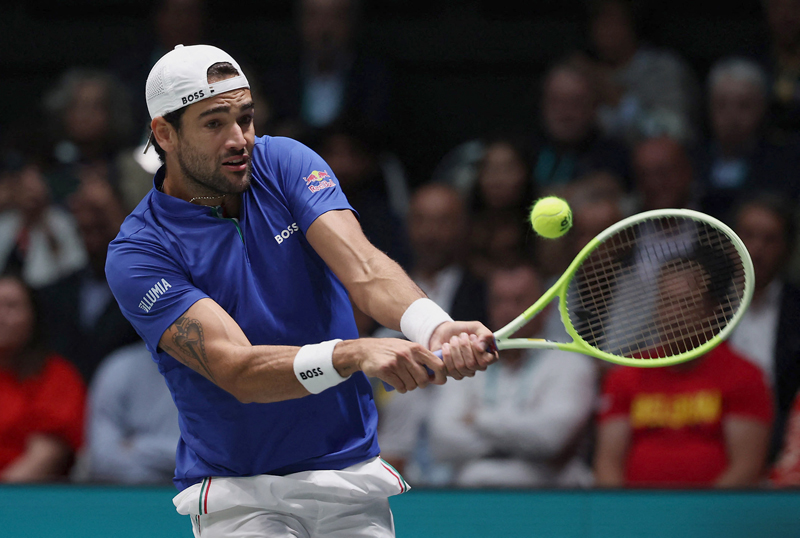You are viewing 1 of your 1 free articles. For unlimited access take a risk-free trial
Endurance training: two halves versus one whole!
What are the pros and cons of splitting moderate to high-intensity training sessions into morning and afternoon halves? SPB looks at new research
As all endurance athletes know (or should know!), if you want to get fitter and perform better, you need to train in a way that generates a sufficient training load, which in turn induces positive endurance training adaptations in the body. The training load imposed can be generated by manipulating the training volume, intensity, and frequency of workouts. But the perennial question of course is ‘what’s the best way to structure your training sessions to get a good training adaptation without inducing excessive fatigue or the risk of injury?’
The elite approach
When examining the training programs of elite and world-class endurance athletes, scientists have reported that typical annual training volumes range from 500 to 1,200 hours (around 10-24 hours per week) depending on the sport-specific demands(1). In terms of the distribution of training intensity, most of these hours (70-90%) are performed at low intensity supplemented by around 10%–30% of the hours at moderate to high-intensity training(2). Indeed, what’s noticeable with elite endurance athletes is just how relatively small the volumes of high intensity training are compared to the much larger volumes of low and low-moderate intensity training(3).
Moderate/high-intensity structure
Given that successful athletes perform relatively small volumes of moderate and moderate-high intensity training but have to race at these intensities for potentially long periods of time, a further valid question is how should these moderate and moderate-high intensity sessions be structured to generate the best training adaptations possible? Let’s first clearly define what we mean by moderate and moderate-high intensity. This is the type of training performed between the first and second lactate or ventilatory thresholds - often referred to as LT1 and LT2 respectively - and often referred to as ‘threshold training‘(4). This type of training can be performed both as continuous sessions and as intervals with relatively long work duration.
Figure 1: Moderate/high-intensity exercise in relation to LT1 and LT2
As figure 1 shows, LT1 is where the intensity of exercise transitions from almost purely aerobic (relying on oxygen only) to one where some of the energy is derived from the breakdown of carbohydrate without oxygen (glycolysis). At this point, a plot of blood lactate vs. intensity shows a clear inflection point where lactate concentrations in the blood begin to gently rise. As you increase exercise intensity and reach LT1, you will notice this is first stage at which you will find it difficult to chat comfortably. Continue increasing exercise intensity and you reach LT2, which is where a large proportion of your energy demand is met from glycolysis. As LT2 is reached, there’s another upwards inflection point in the lactate curve and you will find it difficult to talk at all. Once LT2 is exceeded, continuing at the same exercise intensity or higher becomes impossible for more than two or three minutes.
Double threshold training
Moderate/high-intensity training can be performed both as continuous sessions and as intervals with relatively long work durations. While endurance athletes will often schedule a couple of these moderate/high-ntensity session per week, an increasingly popular method adopted across many different endurance sports is so-called ‘double-threshold training’, where two separate half-length threshold sessions are performed on the same day(5). In theory, splitting these moderate/high-intensity sessions into morning and afternoon or evening halves could enable athletes to make each half a bit more intense than would be possible in one single longer session, thereby increasing the training stimulus.
Alternatively, these halves can use the same intensity but be made a little longer, thus extending the duration at moderate/high intensity. The latter makes sense when preparing for competition; the exercise intensity during such sessions, is typically around 82%–87% of maximal heart rate (HRmax), with blood lactate in the region of 2-4mmol/L so these sessions could help to accumulate more time at relatively high, competition-specific intensities(6).
Comparing single vs. double sessions
On the face of it, splitting moderate/high-intensity sessions in two halves and working a little harder or long in each half sounds like a great idea. However, there is a counter argument to this approach. Firstly, the specificity of training principle states that training should replicate race demands as closely as possible, and you cannot run/cycle swim etc your race in two halves with a break in between! If you’re aiming to complete a long-duration event at a certain speed or power, but carry out your higher-intensity training over shorter chunks of time, you will never fully replicate the demands of the event.
Secondly, it can be argued that by performing fewer, but longer sessions at moderate/high intensity, athletes can generate a larger session training stimulus caused by greater work per session and a phenomenon called ‘duration-dependent drift’, where the gradual accumulation of fatigue over a long session is thought to upregulate key molecular signalling pathways that are important for producing training adaptations(7). This phenomenon of increased internal intensity caused by session drift has been observed during prolonged sessions of low intensity endurance training in well-trained cyclists(8), and is also known to increase the perceived training session stress experienced by athletes, which some researchers argue is good preparation for a competitive environment(9).
New research
To date, no research has directly compared the endurance training effects of single, longer, moderate-high-intensity sessions with the same training load split into two halves on the same day. But now a new study just published by Norwegian scientists in the journal ‘Frontiers in Physiology’ has done just this(10). In this study, the researchers set out to compare the acute physiological responses and perceived training stress between one long and two short time- and intensity-matched sessions of moderate/high-intensity training in a group of national level endurance athletes.
What they did
Fourteen trained male endurance athletes (11 national-level cross-country skiers and three elite runners) were recruited. All were aged between 18 and 35 years with more than five years experience of endurance training and without any major interruption due to injury or illness, and who were performing at least five endurance training sessions per week. After undergoing some preliminary testing to determine the exercise intensity that generated LT1 and LT2 in each athlete, all the athletes underwent two separate experimental running trials on a treadmill, on separate days in a randomized order:
· One single long interval session containing a warm up, 6 x intervals of 10 minutes per interval with two minutes recovery between each interval and a cool down.
· Two shorter sessions, each containing a warm up, 3 x intervals of 10 minutes per interval with two minutes recovery between each interval and a cool down, with one performed in the morning and one in the afternoon after 6.5 hours rest
Importantly, both the long and the split sessions involved the exact same amount of total work and intensity, which corresponded to 90% of the participants’ speed at LT2 (lactate concentration of 4mmol/L - ie towards the upper end of the moderate/high intensity range). Eagle-eyed readers will spot that the training day with two half sessions contained two warm ups and cool downs, whereas the training day with a single session only contained one warm up and cool down. To equalize the protocols and ensure the total workload was identical in both session types therefore, the single longer session training day also included an extra afternoon session, consisting of just a warm up and cool down. Figure 2 shows the single and the double-half protocols side by side.
Figure 2: The single (long) and double-half training protocols
The measurements
How did the researchers evaluate the physiological training stimulus delivered by the two different training structures? This was done by measuring respiratory variables (including oxygen consumption, breaths per minute and exhaled gases), heart rates during sessions and during the recovery period at the end, blood lactate and perceived exertion. After each session, heart rate while lying down was measured at 15, 30, 45 and 60 minutes. This was to gauge the participants’ ‘autonomic recovery’ – a measure of how long the body take to settle back into its base state after exercise, thereby revealing how much internal physiological stress is generated by a training session. Finally, measures of perceived training stress on a scale of 1-10 were assessed in the morning of the subsequent day.
Key findings
The key finding to emerge was that compared to two half sessions, performing one long session was associated with overall higher physiological responses, attributed to a duration-dependent ‘drift’ in heart rate, blood lactate and perceived exertion. This meant that during the intervals 4, 5 and 6 in long session, heart rates, blood lactate and perceived exertion were higher than the three intervals of the second half session in the split trial (see figure 3a). Indeed, heart rates and lactate in part two of the split session actually fell a little compared to part one of the split session.
When it came to the 60-minute post-exercise recovery, heart rates were higher at the end of the hour following the single session of six intervals than after the three intervals of the second session in the split protocol (figure 3b). This demonstrated slower autonomic recovery meaning higher physiological stress. Overall, the when both halves of the split session had been completed, the athletes rated it as subjectively easier than the single 60-minute session. In addition, the single session produced more subjective muscle soreness and fatigue the following day compared to the two split sessions.
Long vs. double half sessions: figure 3a (top) and figure 3b (bottom)
*Top: A = perceived exertion; B = heart rate; C = blood lactate. Red dots and lines = the double session of two halves. Blue dots and lines = single session. Note how intervals 4-6 in the single session led to higher physiological stress than the corresponding intervals of the second session in the split protocol.
*Bottom: The long, single session (blue) resulted in significantly higher heart rates one hour after resting than the split sessions (red), indicating slower autonomic recovery and higher physiological stress.
Using these findings for your own training
What do these findings mean for endurance athletes in training? To answer this, we can turn to authors’ own conclusions. Their data shows that using a double threshold training approach by splitting a lengthier threshold interval session into morning and afternoon halves can allow athletes to accumulate the same degree of work at threshold, while minimizing physiological stress and improving recovery. So straight off the bat, this could be a valuable approach for athletes who want to maintain or build fitness with a reduced risk of overreaching or extended recovery times. In this respect, it might particularly suit older athletes who tend to recover more slowly.
However, double threshold training can also be used to increase the overall volume of moderate-intensity training. In the sessions used above for example, the researchers suggested that athletes could increase the duration of their two half sessions to 40 minutes each (ie a total of 80 minutes in a day), while imposing no more physiological stress than a single 60-minute session. Another option for double threshold training would be to perform each half session at a slightly higher intensity (ie more competition-relevant speed or power) than in a single session and still not create additional physiological stress compared to a single 60-minute session.
For triathletes and other multi-sport endurance athletes, a third option is to mix and match the halves – eg a morning cycling half session and an afternoon running half session, then reversing this combination for a second double threshold session later in the week. Despite these positives however, there is a final caveat, which is that though it’s more demanding, performing a single longer session leads to a higher acute physiological response due to a duration-dependent ‘drift in physiological measures. While more tiring, this effect can potentially elicit a greater training adaptation (eg by improved of molecular signalling). Moreover, single, longer-duration threshold sessions more closely replicate a race situation. This means that they perhaps shouldn’t be excluded completely, but instead athletes should use them carefully and judiciously as part of their preparation for an important event!
References
1. Sports Med 2023. 53 (8), 1595–1607. doi:10.1007/s40279-023-01850-z
2. Front. Sports Act 2023. Living 5, 1258585
3. Sports Med. Open 2022. 8 (1), 46
4. Med. Sci. Sports Exerc 2010. 39 (8), 1366–1373
5. Int. J. Environ. Res. Public Health 2023. 20 (5), 3782
6. Bakken M. (2022). The Norwegian Model of Lactate Threshold Training and Lactate Controlled Approach to Training. Available at: www.mariusbakken.com/the-norwegian-model.html
7. Sports Med 2021. 51 (8), 1619–1628
8. Scand. J. Med. Sci. Sports 2017. 27 (4), 408–417
9. Int. J. Sports Physiol. Perform 2022. 17, 1590–1598
10. Front Physiol. 2024 Jul 30:15:1428536. doi: 10.3389/fphys.2024.1428536
Newsletter Sign Up
Testimonials
Dr. Alexandra Fandetti-Robin, Back & Body Chiropractic
Elspeth Cowell MSCh DpodM SRCh HCPC reg
William Hunter, Nuffield Health
Newsletter Sign Up
Coaches Testimonials
Dr. Alexandra Fandetti-Robin, Back & Body Chiropractic
Elspeth Cowell MSCh DpodM SRCh HCPC reg
William Hunter, Nuffield Health
Keep up with latest sports science research and apply it to maximize performance
Today you have the chance to join a group of athletes, and sports coaches/trainers who all have something special in common...
They use the latest research to improve performance for themselves and their clients - both athletes and sports teams - with help from global specialists in the fields of sports science, sports medicine and sports psychology.
They do this by reading Sports Performance Bulletin, an easy-to-digest but serious-minded journal dedicated to high performance sports. SPB offers a wealth of information and insight into the latest research, in an easily-accessible and understood format, along with a wealth of practical recommendations.
*includes 3 coaching manuals
Get Inspired
All the latest techniques and approaches
Sports Performance Bulletin helps dedicated endurance athletes improve their performance. Sense-checking the latest sports science research, and sourcing evidence and case studies to support findings, Sports Performance Bulletin turns proven insights into easily digestible practical advice. Supporting athletes, coaches and professionals who wish to ensure their guidance and programmes are kept right up to date and based on credible science.
